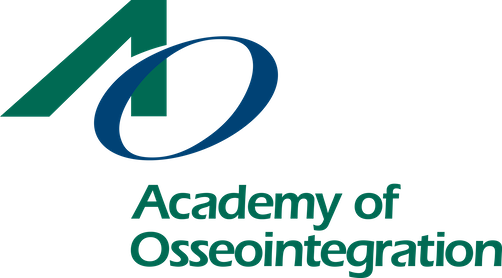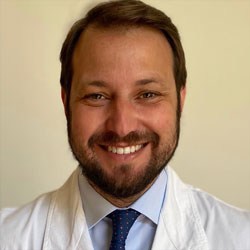-
 Gustavo Mendonca, DDS, MS, PhD It is critical to position and prepare ourselves with digital workflow in mind to be prepared and up to date with current technology. Digital technology is becoming more affordable in everyday dentistry. Combination of computed tomography and 3D scanning allows more advanced and predictable planning for treatment for implant cases. These advanced tools have great applications in clinical practice. This presentation will discuss steps of digital workflow for implant treatment planning and interim and final restorations utilizing intraoral scanners, CAD/CAM software and Recorded - May 17, 2022
Gustavo Mendonca, DDS, MS, PhD It is critical to position and prepare ourselves with digital workflow in mind to be prepared and up to date with current technology. Digital technology is becoming more affordable in everyday dentistry. Combination of computed tomography and 3D scanning allows more advanced and predictable planning for treatment for implant cases. These advanced tools have great applications in clinical practice. This presentation will discuss steps of digital workflow for implant treatment planning and interim and final restorations utilizing intraoral scanners, CAD/CAM software and Recorded - May 17, 2022 -
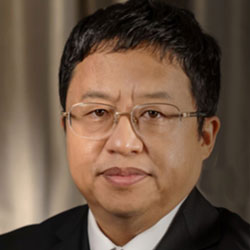 Haiyang Yu, PhD, DDS In implant surgery, a good linear guiding accuracy can be realized by static template, but it is still less than 1mm. Such accuracy, not as high as expected, can be attributed to the lack of physical measurement during the surgery. Physical measurement is an effective way to manage the implant error within the acceptable limits. Although periodontal probe is wildly used, it is not an appropriate measuring tool for implant surgery which requires accuracy less than 1mm. In order to ensure the implant accuracy, it is necessary to measure and check the crown-root ratio and angle of implants as well as the distance between implants and adjacent teeth by special measuring tools with less-than-1mm accuracy at each interoperative step. This presentation will review the evolution of the guiding methods of implant surgery and the accuracy of these methods, and elaborate on the significance and principle of interoperative physical-measurement through clinical cases. Recorded - May 19, 2022
Haiyang Yu, PhD, DDS In implant surgery, a good linear guiding accuracy can be realized by static template, but it is still less than 1mm. Such accuracy, not as high as expected, can be attributed to the lack of physical measurement during the surgery. Physical measurement is an effective way to manage the implant error within the acceptable limits. Although periodontal probe is wildly used, it is not an appropriate measuring tool for implant surgery which requires accuracy less than 1mm. In order to ensure the implant accuracy, it is necessary to measure and check the crown-root ratio and angle of implants as well as the distance between implants and adjacent teeth by special measuring tools with less-than-1mm accuracy at each interoperative step. This presentation will review the evolution of the guiding methods of implant surgery and the accuracy of these methods, and elaborate on the significance and principle of interoperative physical-measurement through clinical cases. Recorded - May 19, 2022 -
 Ueli Grunder, DMD Although we all prefer to talk about beautiful successes, it is usually more interesting to talk about complications. Even before a planned implantation in the esthetic zone, there may be problems that require a special intervention. During implant therapy, usually in combination with bone and soft tissue augmentation, undesirable complications can occur, especially in the way of poor healing, and finally, unsatisfactory results are seen after the end of the treatment, which may require re-treatment. In most cases, the complications manifest themselves quantitatively or qualitatively in the soft tissue. In this lecture we will discuss how to deal with certain complications. Unfortunately, only a few examples can be discussed within the scope of this lecture. Recorded - June 21, 2022
Ueli Grunder, DMD Although we all prefer to talk about beautiful successes, it is usually more interesting to talk about complications. Even before a planned implantation in the esthetic zone, there may be problems that require a special intervention. During implant therapy, usually in combination with bone and soft tissue augmentation, undesirable complications can occur, especially in the way of poor healing, and finally, unsatisfactory results are seen after the end of the treatment, which may require re-treatment. In most cases, the complications manifest themselves quantitatively or qualitatively in the soft tissue. In this lecture we will discuss how to deal with certain complications. Unfortunately, only a few examples can be discussed within the scope of this lecture. Recorded - June 21, 2022 -
 Michael Miloro, DMD, MD Nerve injuries may occur following dental implant placement but there is no consensus on treatment protocols, and, unfortunately, patient morbidity may be significantly affect quality of life. Proper planning can mitigate the risk of nerve damage, but prompt diagnosis and management is required when nerve injury occurs. Both non-surgical and surgical options exist to treat these injuries, and current technological advances have allowed the use of a processed nerve allograft to repair the nerve with excellent outcomes. Recorded - June 30, 2022
Michael Miloro, DMD, MD Nerve injuries may occur following dental implant placement but there is no consensus on treatment protocols, and, unfortunately, patient morbidity may be significantly affect quality of life. Proper planning can mitigate the risk of nerve damage, but prompt diagnosis and management is required when nerve injury occurs. Both non-surgical and surgical options exist to treat these injuries, and current technological advances have allowed the use of a processed nerve allograft to repair the nerve with excellent outcomes. Recorded - June 30, 2022 -
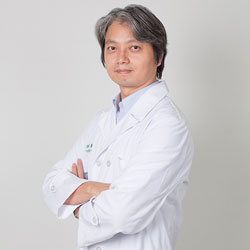 Reis Cheng-Hsiang Hsu, BDS, MS “PASS” principle (Primary wound closure, angiogenesis, space and stability) is the foundation for achieving predictable bone augmentation. This lecture will cover every aspect of this principle so the participants can predictably achieve the bone augmentation that is needed for proper implant placement and implant stability. The lecture will focus on the detail technique of extreme flap advancement, graft mobilization and the skill of flap closure that can be applied even in the vertical bone augmentation. Recorded - July 14, 2022
Reis Cheng-Hsiang Hsu, BDS, MS “PASS” principle (Primary wound closure, angiogenesis, space and stability) is the foundation for achieving predictable bone augmentation. This lecture will cover every aspect of this principle so the participants can predictably achieve the bone augmentation that is needed for proper implant placement and implant stability. The lecture will focus on the detail technique of extreme flap advancement, graft mobilization and the skill of flap closure that can be applied even in the vertical bone augmentation. Recorded - July 14, 2022 -
 Oliver Ristow, MD, DDS This course will cover the most recent changes in online marketing and provide the components needed to create a comprehensive marketing strategy for both existing practices or start-ups. You will learn the key items to implement, how they work, and how to measure success. In this session we will discuss changes in Google’s algorithm, website optimization, social media, accessibility, and ways you can optimize your website to generate new patients. Recorded - July 20, 2022
Oliver Ristow, MD, DDS This course will cover the most recent changes in online marketing and provide the components needed to create a comprehensive marketing strategy for both existing practices or start-ups. You will learn the key items to implement, how they work, and how to measure success. In this session we will discuss changes in Google’s algorithm, website optimization, social media, accessibility, and ways you can optimize your website to generate new patients. Recorded - July 20, 2022 -
 Rand Harlow, DDS Maxillary anterior single tooth implant therapy can be challenging on multiple levels. Patients are becoming more demanding with their esthetic expectations. Achieving optimal esthetic outcomes requires an understanding of hard and soft tissue relationships, digital workflows and dental materials. This presentation will explore multiple considerations from diagnosis and treatment planning to treatment execution, in order to achieve acceptable esthetic results for maxillary implant surgery and restoration. Recorded - September 15, 2022
Rand Harlow, DDS Maxillary anterior single tooth implant therapy can be challenging on multiple levels. Patients are becoming more demanding with their esthetic expectations. Achieving optimal esthetic outcomes requires an understanding of hard and soft tissue relationships, digital workflows and dental materials. This presentation will explore multiple considerations from diagnosis and treatment planning to treatment execution, in order to achieve acceptable esthetic results for maxillary implant surgery and restoration. Recorded - September 15, 2022 -
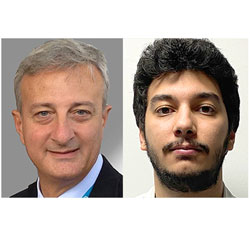 Giacomo Oteri, DDS, MD and Matteo Peditto, DDS, PhD, MSc More and more frequently, the oral surgeon uses analogic and digital diagnostic tools and workflows to perform oral and implant surgery procedures Does the use of these technologies always improve the precision of interventions, reducing morbidity and invasiveness? The current advantages and limitations of analogic and / or digital pathways in various clinical applications will be shown. Recorded - October 11, 2022
Giacomo Oteri, DDS, MD and Matteo Peditto, DDS, PhD, MSc More and more frequently, the oral surgeon uses analogic and digital diagnostic tools and workflows to perform oral and implant surgery procedures Does the use of these technologies always improve the precision of interventions, reducing morbidity and invasiveness? The current advantages and limitations of analogic and / or digital pathways in various clinical applications will be shown. Recorded - October 11, 2022 -
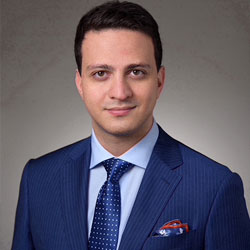 Shayan Barootchi, DMD Implant therapy has become the standard treatment for replacement of missing teeth. Nonetheless, with its popularity, there has been a rise in aesthetic and biological complications and the emergence of peri-implant diseases. This presentation will focus on the components of the peri-implant phenotype, particularly the implant soft tissue phenotype, and strategies for its augmentation and therefore, modification. The importance of keratinized mucosa on peri-implant health will be reviewed together with the various approaches to regenerate keratinized and attached peri-implant mucosa. Similarly, the key role of tissue thickness for stability and esthetics, as well as surgical approaches and biomaterials for mucosal thickness augmentation, will be discussed. This presentation will also touch upon novel methodologies for assessment and quantification of implant health and disease. Recorded - October 13, 2022
Shayan Barootchi, DMD Implant therapy has become the standard treatment for replacement of missing teeth. Nonetheless, with its popularity, there has been a rise in aesthetic and biological complications and the emergence of peri-implant diseases. This presentation will focus on the components of the peri-implant phenotype, particularly the implant soft tissue phenotype, and strategies for its augmentation and therefore, modification. The importance of keratinized mucosa on peri-implant health will be reviewed together with the various approaches to regenerate keratinized and attached peri-implant mucosa. Similarly, the key role of tissue thickness for stability and esthetics, as well as surgical approaches and biomaterials for mucosal thickness augmentation, will be discussed. This presentation will also touch upon novel methodologies for assessment and quantification of implant health and disease. Recorded - October 13, 2022 -
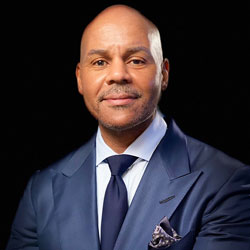 Richard Martin, DDS Collapse of the buccopalatal dimension of an extraction socket in implant dentistry is a known sequela. Multiple ridge preservation techniques to include bone and soft tissue grafting have been utilized over the years, Although these techniques can be successful, loss of buccal contour is a common finding even after 1 year in function. Ultimately this can lead the hygiene compromise and periimplantitis. Partial extraction therapy (PET) (socket shield, pontic shield and root submergence), specifically the socket shield is a technique aimed at addressing this collapse. The success of the procedure is due to intentional retention of small fragment of buccal root attached the bone. This root attachment has been shown to maintain the periodontal ligament (PDL)j and blood supply and as result the thin bundle bone. Utilization if the PET in full arch implant reconstruction has shown to be effective. Recorded - October 18, 2022
Richard Martin, DDS Collapse of the buccopalatal dimension of an extraction socket in implant dentistry is a known sequela. Multiple ridge preservation techniques to include bone and soft tissue grafting have been utilized over the years, Although these techniques can be successful, loss of buccal contour is a common finding even after 1 year in function. Ultimately this can lead the hygiene compromise and periimplantitis. Partial extraction therapy (PET) (socket shield, pontic shield and root submergence), specifically the socket shield is a technique aimed at addressing this collapse. The success of the procedure is due to intentional retention of small fragment of buccal root attached the bone. This root attachment has been shown to maintain the periodontal ligament (PDL)j and blood supply and as result the thin bundle bone. Utilization if the PET in full arch implant reconstruction has shown to be effective. Recorded - October 18, 2022 -
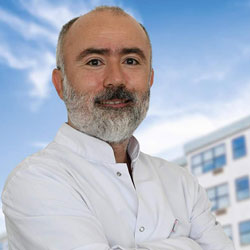 Guney Yilmaz, DDS, PhD In this presentation, detailed information regarding the surgical use of preferred hard and soft tissue lasers for periodontal treatments and implantology is going to be shared. In order to make effective use of lasers in dentistry, the basic physical principles and technical properties of lasers are going to be highlighted. Subsequently, the basics of using hard and soft tissue lasers in periodontal surgery are going to explained as well as how clinicians can benefit from these devices in implantology will be illustrated using cases. Recorded - October 20, 2022
Guney Yilmaz, DDS, PhD In this presentation, detailed information regarding the surgical use of preferred hard and soft tissue lasers for periodontal treatments and implantology is going to be shared. In order to make effective use of lasers in dentistry, the basic physical principles and technical properties of lasers are going to be highlighted. Subsequently, the basics of using hard and soft tissue lasers in periodontal surgery are going to explained as well as how clinicians can benefit from these devices in implantology will be illustrated using cases. Recorded - October 20, 2022 -
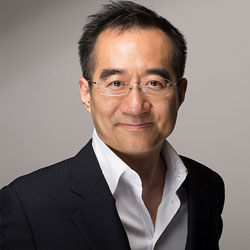 Joseph Kan, DDS, MS Esthetics immediate tooth replacement, a controversial, yet intriguing treatment concept conceived more than 25 ago. While the concept has evolved over time, numerous debates had been dedicated to its validity. Now, 25 years later, questions remain: Does it maintain gingival esthetics? Does it work as well as implant in healed sites? Is it a viable option after all ? This presentation will focus on pros and cons of esthetics immediate tooth replacement. More importantly, did we validate this procedure from lessons learned by mistakes made over the past 25 years. Recorded - November 12, 2022
Joseph Kan, DDS, MS Esthetics immediate tooth replacement, a controversial, yet intriguing treatment concept conceived more than 25 ago. While the concept has evolved over time, numerous debates had been dedicated to its validity. Now, 25 years later, questions remain: Does it maintain gingival esthetics? Does it work as well as implant in healed sites? Is it a viable option after all ? This presentation will focus on pros and cons of esthetics immediate tooth replacement. More importantly, did we validate this procedure from lessons learned by mistakes made over the past 25 years. Recorded - November 12, 2022 -
 Pablo Galindo-Moreno, DDS, PhD This presentation will be focused on those surgical factors that are easier and more predictable maxillary sinus floor techniques.How these factors influence the consolidation of the graft used, prevent accidents and complications of these techniques and increase the long-term survival of implants placed in this location will be addressed. The choice of biomaterial suitable for these techniques will be discussed. Recorded - December 1, 2022
Pablo Galindo-Moreno, DDS, PhD This presentation will be focused on those surgical factors that are easier and more predictable maxillary sinus floor techniques.How these factors influence the consolidation of the graft used, prevent accidents and complications of these techniques and increase the long-term survival of implants placed in this location will be addressed. The choice of biomaterial suitable for these techniques will be discussed. Recorded - December 1, 2022 -
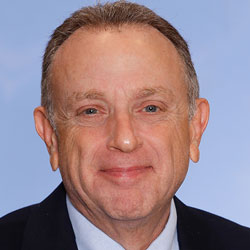 Robert Vogel, DDS This fast-moving clinical based presentation will provide a step by step approach to diagnosis and treatment of the fully and partially edentulous patient with removable prosthesis including overdentures and implant retained removable partial dentures. Scientifically based tips, tricks and techniques will be presented to assure long-term success with precision, productivity and ideal patient care. Issues discussed will include ideal number and position of implants, attachment selection, prosthesis design and introduction of all new prosthetics components. Recorded - December 3, 2022
Robert Vogel, DDS This fast-moving clinical based presentation will provide a step by step approach to diagnosis and treatment of the fully and partially edentulous patient with removable prosthesis including overdentures and implant retained removable partial dentures. Scientifically based tips, tricks and techniques will be presented to assure long-term success with precision, productivity and ideal patient care. Issues discussed will include ideal number and position of implants, attachment selection, prosthesis design and introduction of all new prosthetics components. Recorded - December 3, 2022 -
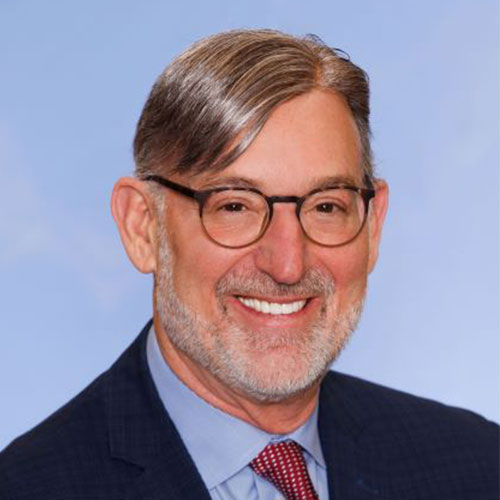
Robert Levine, DDS
This clinical, usable information- packed presentation will describe and identify 10 essential keys for performing immediate single tooth replacement of a hopeless maxillary central incisor. This treatment is considered a complex procedure and a team approach is suggested as the maxillary central incisor is seen as having the most esthetic zone failures resulting in unhappy patients. Once this occurs, restoring the lost hard and soft tissues to their original pre-surgical levels is near impossible. The updated 10 Keys checklist, if strictly followed, will provide high predictability in preventing esthetic complications and offers guidelines to ensure high success based on published studies by Dr. Levine and his clinical research group which confirm the use of the 10 Keys protocol.
Recorded February 4, 2023 -
 Lambert Stumpel, DDS The restorative materials that are used for all on four implant fixed prosthesis vary between PMMA, composite, translucent and high strength Zirconia. Most need internal reinforcement to function successfully in the oral environment. Historically support consisted of a cast gold bar, in recent years CAD/CAM milled titanium has been popularized. Today yet another support system has been developed. It allows the fabrication of a metal bar in about 20-30 minutes, at a fraction of the cost of current CAD/CAM bars. This presentation will show how a prefabricated modular system, when combined with modern printing and milling techniques, allows the fabrication of a final prosthesis near time of implant placement. Recorded – February 25, 2023
Lambert Stumpel, DDS The restorative materials that are used for all on four implant fixed prosthesis vary between PMMA, composite, translucent and high strength Zirconia. Most need internal reinforcement to function successfully in the oral environment. Historically support consisted of a cast gold bar, in recent years CAD/CAM milled titanium has been popularized. Today yet another support system has been developed. It allows the fabrication of a metal bar in about 20-30 minutes, at a fraction of the cost of current CAD/CAM bars. This presentation will show how a prefabricated modular system, when combined with modern printing and milling techniques, allows the fabrication of a final prosthesis near time of implant placement. Recorded – February 25, 2023 -
 Prof. Dr. Tobias Fretwurst What if our therapies were as precise as Netflix recommendations? What sounds like the future is becoming increasingly commonplace in many areas of medicine. In this talk, Dr. Fretwurst will explain in simple terms what is meant by precision medicine and discuss its immense potential. Then he will showcase how his work group is already making use of this so-called personalized medicine in the field of implant dentistry. How can precision medicine be applied, for example, in grafting surgery? Can it revolutionize peri-implantitis diagnosis? What are the current limitations? Recorded - July 12, 2023
Prof. Dr. Tobias Fretwurst What if our therapies were as precise as Netflix recommendations? What sounds like the future is becoming increasingly commonplace in many areas of medicine. In this talk, Dr. Fretwurst will explain in simple terms what is meant by precision medicine and discuss its immense potential. Then he will showcase how his work group is already making use of this so-called personalized medicine in the field of implant dentistry. How can precision medicine be applied, for example, in grafting surgery? Can it revolutionize peri-implantitis diagnosis? What are the current limitations? Recorded - July 12, 2023 -
 Irene Marron-Tarrazzi, DMD, MS This webinar will discuss contemporary approaches for minimally invasive and predictable treatment of soft tissue deformities using microsurgical techniques in periodontal and implant surgery. Upon completion of this presentation, participants should be able to: 1) Explore different surgical techniques where periodontal microsurgical principles can be applied. 2) Describe what the adequate amount of soft tissue management and gingival volume required for peri-implant esthetics. 3) Explain the key factors for a successful outcome. Recorded - January 20, 2024
Irene Marron-Tarrazzi, DMD, MS This webinar will discuss contemporary approaches for minimally invasive and predictable treatment of soft tissue deformities using microsurgical techniques in periodontal and implant surgery. Upon completion of this presentation, participants should be able to: 1) Explore different surgical techniques where periodontal microsurgical principles can be applied. 2) Describe what the adequate amount of soft tissue management and gingival volume required for peri-implant esthetics. 3) Explain the key factors for a successful outcome. Recorded - January 20, 2024 -
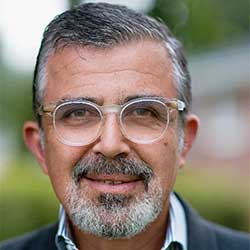 Irene Marron-Tarrazzi, DMD, MS The successful fabrication and delivery of fixed implant supported prosthesis is dependent upon a systematic interplay between the surgical and prosthetic treatment planning objectives. A paradigm shift has taken place as the Graftless surgical approach has gained credibility. Reduced treatment time, a single stage surgical reconstructions and immediate loading has resulted in a higher degree of case acceptance. Upon completion of this presentation, participants should be able to: 1) Identify the appropriate number of implants for full arch reconstructions. 2) Discuss the proper distribution of implants for full arch reconstructions. 3) Explain the use of Axial, tilted and zygoma implants for full arch maxillary reconstructions. Recorded - February 10, 2024
Irene Marron-Tarrazzi, DMD, MS The successful fabrication and delivery of fixed implant supported prosthesis is dependent upon a systematic interplay between the surgical and prosthetic treatment planning objectives. A paradigm shift has taken place as the Graftless surgical approach has gained credibility. Reduced treatment time, a single stage surgical reconstructions and immediate loading has resulted in a higher degree of case acceptance. Upon completion of this presentation, participants should be able to: 1) Identify the appropriate number of implants for full arch reconstructions. 2) Discuss the proper distribution of implants for full arch reconstructions. 3) Explain the use of Axial, tilted and zygoma implants for full arch maxillary reconstructions. Recorded - February 10, 2024

